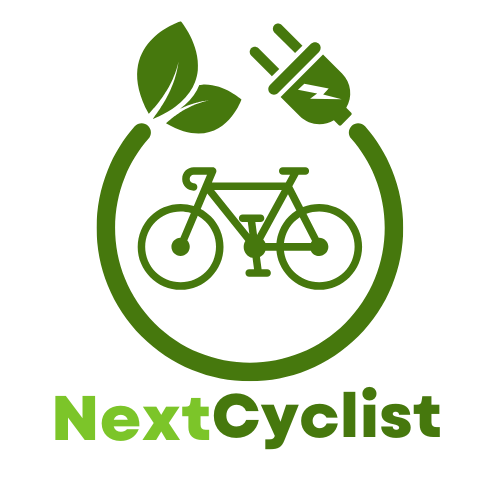E-bikes typically cannot reach speeds of 50 mph. Most e-bikes are limited to a maximum speed of 20 to 28 mph to comply with safety regulations. Some models might reach higher speeds, but they are not standard e-bikes and may require special conditions or modifications. Always check the specifications of the e-bike to know its maximum speed.
Introduction
E-bikes are becoming a go-to choice for many, but can e-bikes go 50 mph? This question isn’t just about speed; it taps into the excitement and practicality of electric bikes. With the thrill of zipping through trails and city streets, understanding what these bikes can actually do matters.
If you’re curious about the limits and capabilities of e-bikes, you’re not alone. Many DIY enthusiasts want to know how fast they can ride without breaking the bank or safety regulations. In this article, we’ll break down the realities of e-bike speeds, looking closely at the factors that affect performance.
We’ll cover everything from battery power to motor size and how these elements can push your e-bike to its limits. By the end, you’ll have a clearer picture of how fast you can go on an e-bike and what you might need to upgrade if you’re aiming for those higher speeds. So, let’s untangle the truth about e-bike speeds together!
TL;DR
- E-bikes are typically capped at 28 mph for street use in most regions.
- The motor power is legally limited to 750 watts to enhance safety.
- Rider weight impacts maximum speed; heavier riders may go slower.
- Terrain affects speed: uphill reduces it, while downhill increases it.
- Weather conditions like wind can significantly influence performance.
- Upgrading to a higher wattage motor can enhance speed potential.
- Using a high-quality lithium-ion battery boosts performance and range.
- Always check local regulations before making modifications to ensure compliance.
Understanding E-Bike Speed Limits
When it comes to ebikes, many riders wonder about speed limits, particularly the potential to zoom past 50 mph. In reality, e-bikes are typically capped at 28 mph for street use in most regions, and this speed limit is essential for rider safety and compliance with local laws.
Here are some key points to consider about e-bike speed limits:
- Motor Power Restrictions: Most regions legally limit the motor power of an ebike to 750 watts. This restriction helps maintain control and stability at higher speeds, ensuring a safer riding experience.
- Rider Weight: Your weight can play a big role in how fast your ebike can go. Heavier riders may find their maximum speeds to be lower, while lighter riders might experience higher speeds, especially on flat terrain.
- Terrain Influence: The terrain also affects your maximum speed. Riding uphill will likely reduce your overall speed, while a smooth downhill path can help you reach your bike’s speed limit faster.
- Weather Conditions: Wind and rain can also impact performance, with headwinds slowing you down while tailwinds can give you that extra push.
To maximize your ebike’s performance and ensure you’re riding safely within legal limits, consider the following tips:
- Regular Maintenance: Check your brakes, tires, and electrical system regularly to ensure everything is functioning properly. A well-maintained ebike will perform better. For more maintenance insights, refer to our guide on e-bike maintenance tips.
- Know Your Local Laws: Be aware of the legal requirements in your area—this can prevent any fines or issues while riding.
In conclusion, understanding these factors can help you enjoy your ebike while staying safe and compliant. For those looking to closely monitor ebike specifics, you might find our e-bike charge time calculator useful.
Speed Limit Overview Table
| Factor | Details |
|---|---|
| Max Speed | 28 mph (most regions) |
| Motor Power | Limited to 750 watts |
| Weight Impact | Heavier riders may go slower |
| Terrain | Uphill reduces speed; downhill increases it |
| Weather Effects | Wind and rain can change performance |
Modifications for Increased Speed
If you’re wondering whether an ebike can reach speeds of 50 MPH, modifications can play a crucial role in unlocking that potential. By enhancing specific components, you can boost speed without compromising safety. Here are some common modifications to consider:
Upgrading to a higher wattage motor can enhance speed potential.
One of the most straightforward upgrades you can make is to swap out your motor for a higher wattage option. A more powerful motor translates to more torque and, consequently, higher speeds. For instance, if your current motor is 250W, consider upgrading to a 750W model. This change may even make steep hills feel like a flat ride. However, make sure that your ebike’s frame can handle this new motor to avoid structural issues.
Using specialized batteries may improve performance and range.
The battery is just as vital as the motor for speed gains. Upgrading to a high-quality lithium-ion battery can offer better performance and longer life. For example, swapping a standard 36V battery for a 48V one can significantly boost your speed and range. Just ensure the new battery is compatible with your bike’s electrical system, as mismatches can lead to performance issues.
Always check local regulations before modifying your e-bike.
Before making any modifications, it’s essential to review your local regulations regarding ebike speed limits and motor wattage. Some areas may restrict ebikes to a specific top speed or power output, and exceeding these limits could result in fines or the bike being deemed illegal to ride on public roads.
Quick Comparison Table
| Modification | Potential Benefits | Notes |
|---|---|---|
| Higher wattage motor | Increased speed and torque | Ensure frame compatibility |
| Specialized batteries | Better performance and range | Check for voltage compatibility |
| Legal compliance | Avoid fines and issues | Research local laws |
By following these tips, you can enhance your ebike’s speed while ensuring a safe and enjoyable ride. Always remember to ride responsibly and keep safety as a priority!
In closing, can e-bikes really hit 50 mph? The answer is a nuanced one. While most e-bikes are capped at around 28 mph for safety and legal reasons, understanding things like motor power, rider weight, terrain, and weather can help you maximize your bike’s performance. If you’re itching for more speed, consider practical modifications like upgrading your motor or battery — just keep local laws in mind!
So, why not take the next step? Check out our maintenance guide on e-bikes to ensure your ride is in top shape or subscribe for more tips and tricks that every DIY enthusiast should know. Remember, getting the most out of your e-bike is about knowledge and a little effort. Let’s ride smarter!

